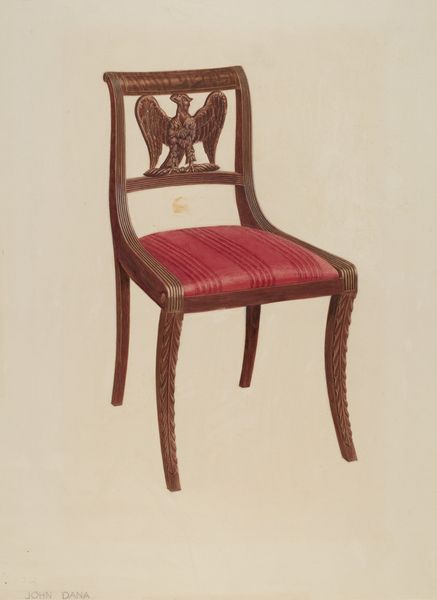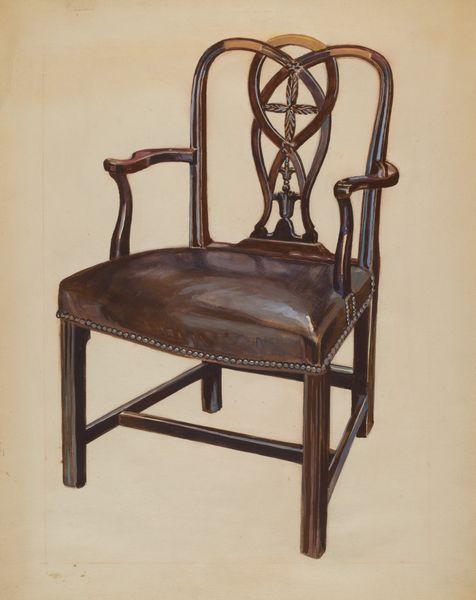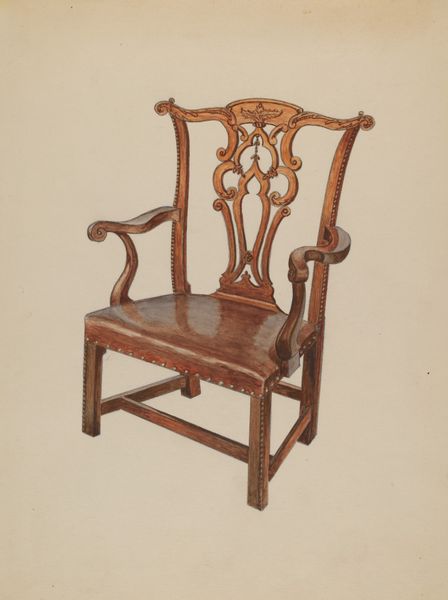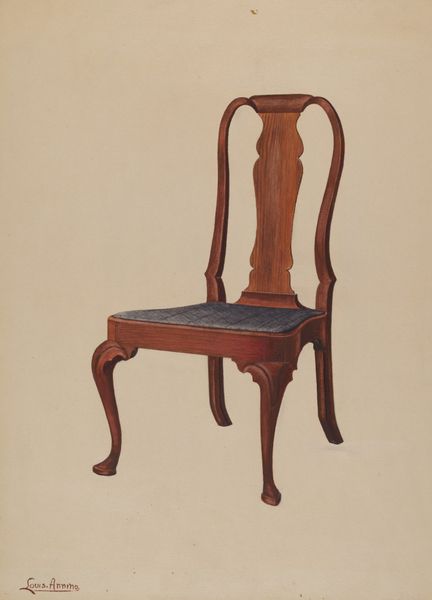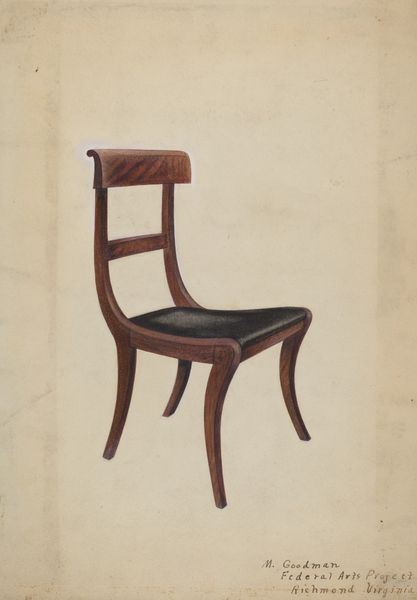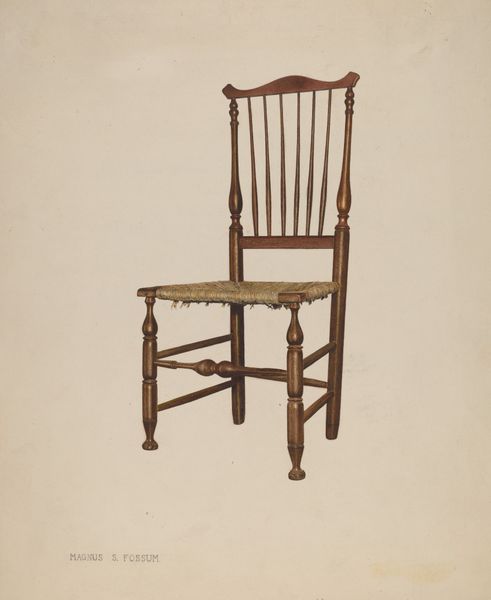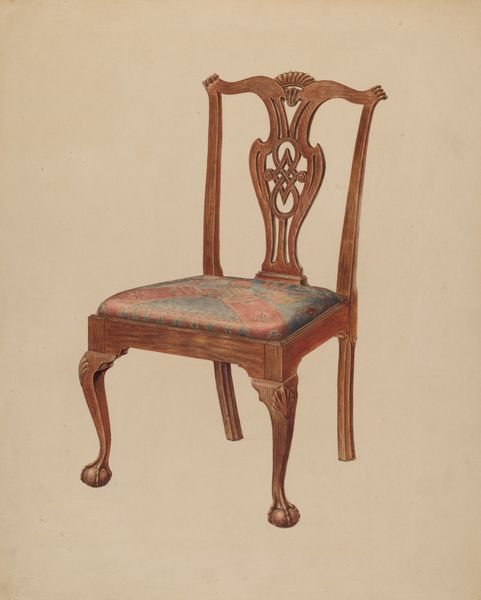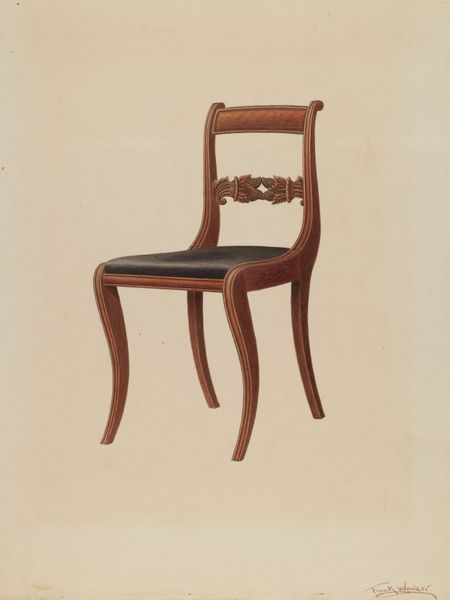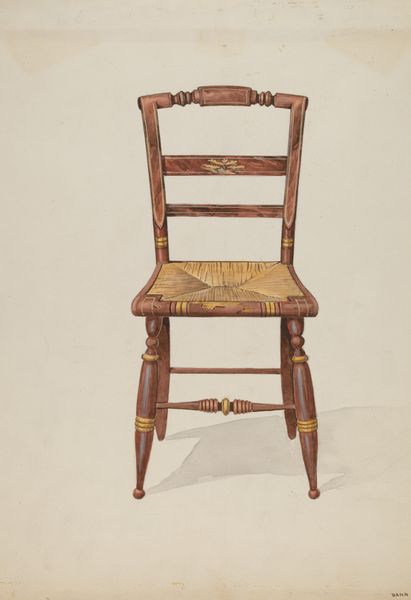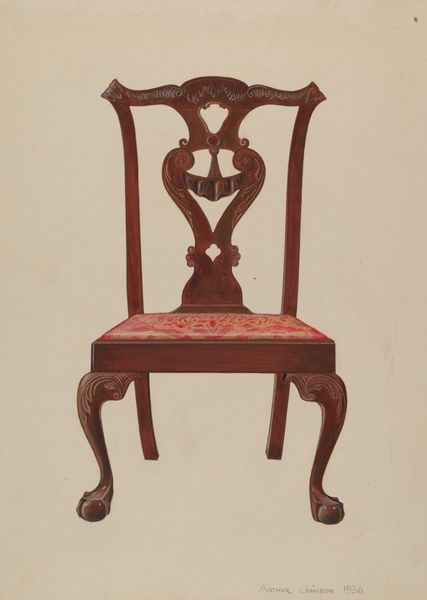
drawing, watercolor
#
portrait
#
drawing
#
toned paper
#
watercolor
#
watercolour illustration
#
academic-art
#
watercolor
Dimensions: overall: 30.1 x 22.5 cm (11 7/8 x 8 7/8 in.) Original IAD Object: none given
Copyright: National Gallery of Art: CC0 1.0
Editor: Here we have Arthur Johnson’s “Armchair,” from around 1937. It's a watercolor drawing, and there's something so precise and clean about it. I am drawn to its elegant form. How do you interpret this work? Curator: What strikes me most is the rigorous adherence to line and form. Note the meticulous rendering of the chair’s structure: the parallel lines of the back, the curves of the armrests. Consider the semiotic relationship between the sharp angles of the chair's frame and the implied softness of the seat. Editor: I see what you mean about the contrast. It's not just about representing a chair; it's almost like dissecting one to its essential elements. Curator: Precisely. The artist utilizes watercolor in a way that emphasizes the two-dimensionality of the image, while simultaneously suggesting volume through careful shading. What effect does the limited color palette have on your perception? Editor: It almost makes it feel like an architectural blueprint rather than just an illustration. The subtle variations in tone suggest the wood’s texture, but everything feels very controlled, very deliberate. Curator: Yes. The interplay between representation and abstraction is key. Consider how the artist uses negative space to define the object's contours, creating a dynamic tension between what is there and what is absent. Editor: It's amazing how much you can see just by focusing on the lines and shapes. I was so focused on the image *of* a chair that I missed so much. Curator: The essence of formalism is uncovering meaning through the intrinsic elements of the work itself. Each brushstroke contributes to a visual dialogue, inviting us to explore the inherent qualities of art. Editor: I definitely see this piece in a new light now. It makes me want to examine other seemingly simple works with a more analytical eye.
Comments
No comments
Be the first to comment and join the conversation on the ultimate creative platform.
